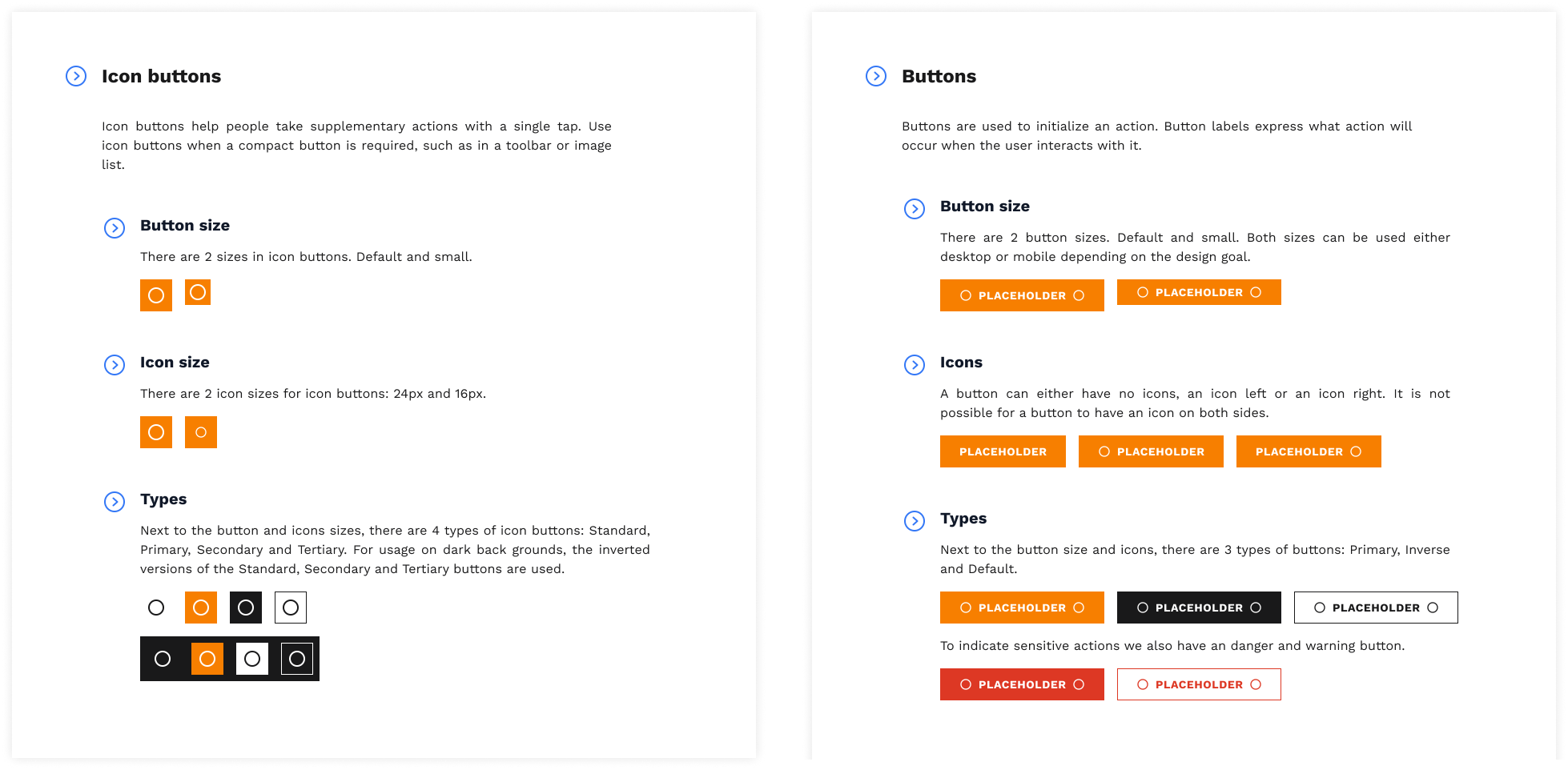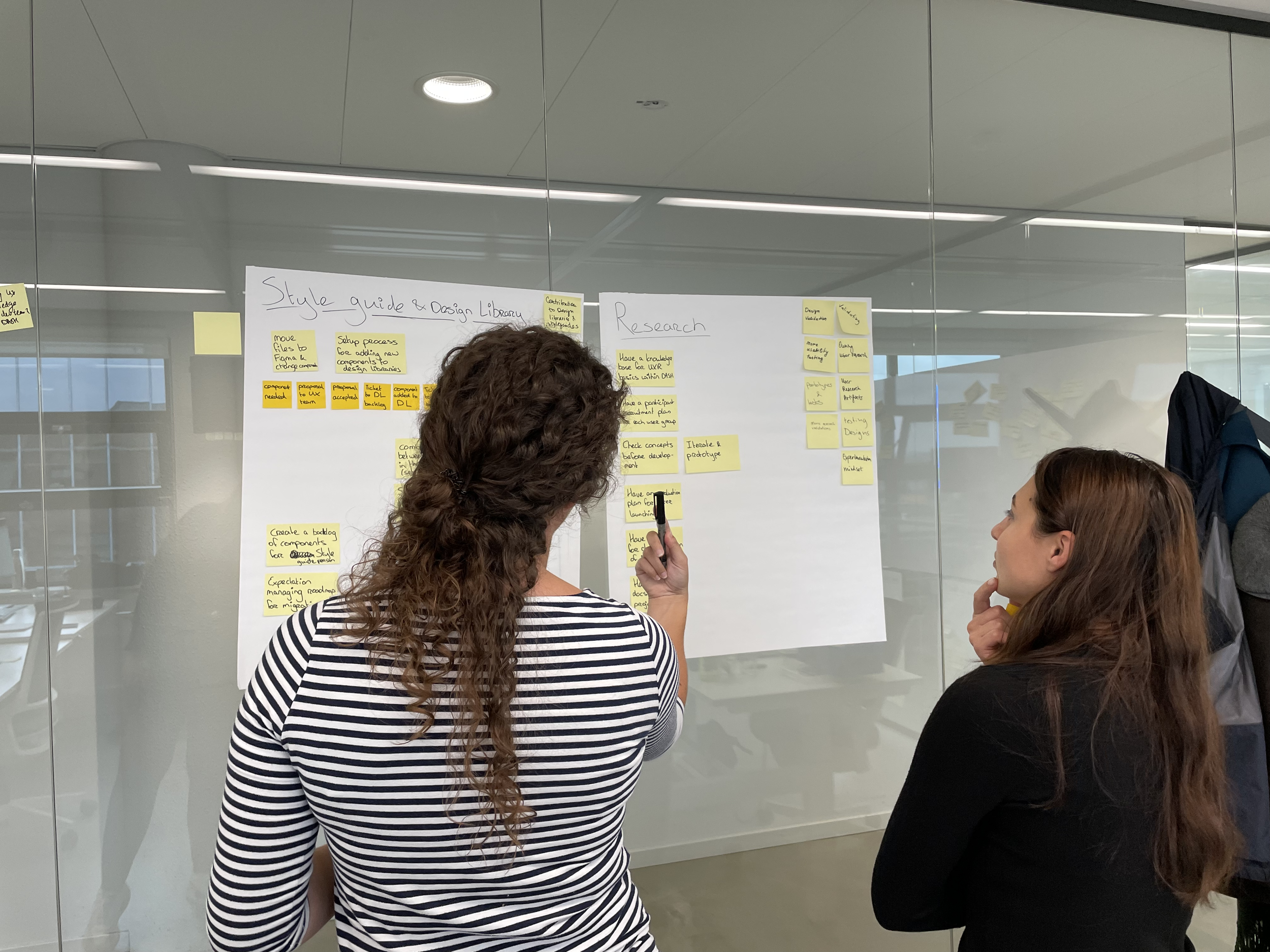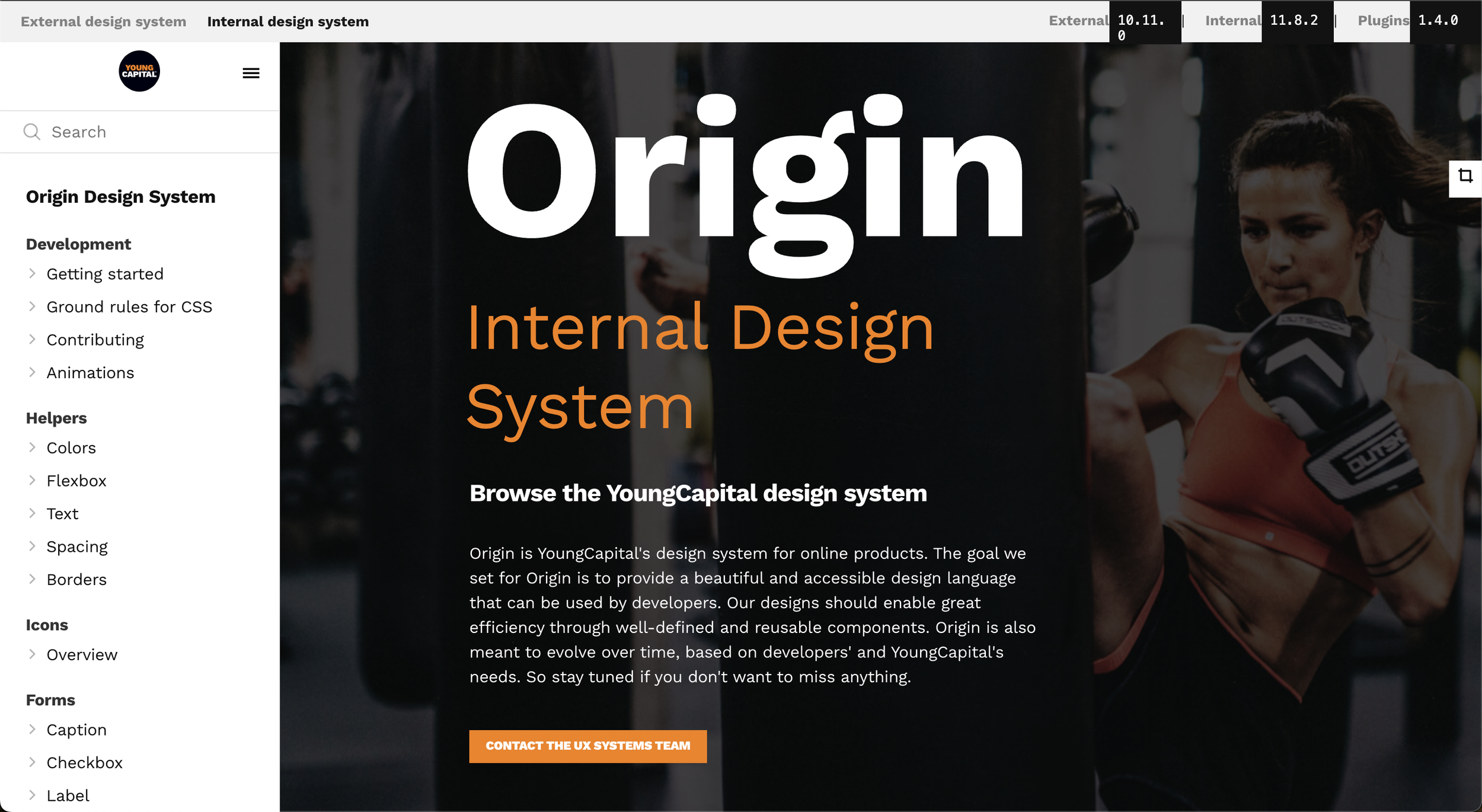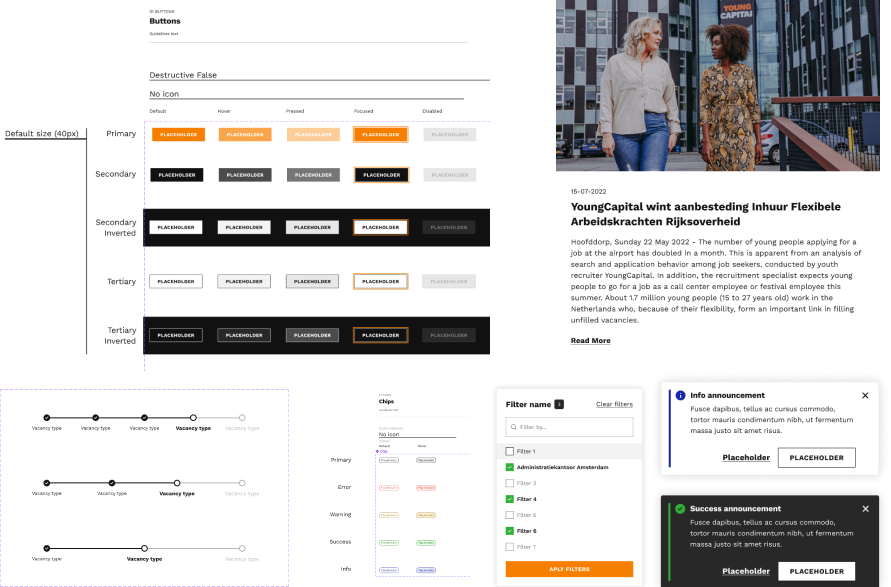Origin Desing System
Introduction
Five years ago, when I began my journey at YoungCapital as a Senior Product Designer, one of the most pressing challenges was the lack of design consistency across our products. We operated without a design system or effective CSS style guides, which hindered our ability to deliver a seamless user experience, advance our UX maturity, and foster a culture of experimentation and testing. To address this, I spearheaded the creation of the YC Origin Design System, which would serve as the foundation for all our internal software applications and websites.
Timeline:
2019 - ongoing updates
Role & Team:
Role: Senior Product Designer
Team: Initially solo, in 2022 I expanded the design team
Key Responsibilities:
Conducted UX Audit and identified UI patterns.
Collaborated with front-end developers to enhance design assets.
Created and maintained a comprehensive design system and detailed design library.
Problem Statement
The primary challenges for the YC Origin Design System included:
Developing a design system that could serve all 300+ internal software applications.
Creating a versatile and easy-to-use design system.
Streamlining product development processes to enhance efficiency and consistency.

Research & Discovery
I initiated the project with a comprehensive UX audit of our existing applications and design files, identifying common UI patterns and understanding the YoungCapital branding. Close collaboration with front-end developers helped enhance existing design assets, and ongoing discussions with Product Managers ensured alignment with organizational needs. This initial research phase provided critical insights that informed the development of the design system.
Strategy & Planning
The strategy for the YC Origin Design System focused on:
Simplicity and clarity in design.
Reducing cognitive load for users.
Prioritizing functionality to support staff software and internal websites. We aimed to create tools that would streamline product development processes and facilitate consistency across all applications.

Design Process
The design process involved extensive ideation, collaboration, and iteration. I conducted ideation sessions and workshops with key stakeholders, including designers, developers, and Product Managers. Collaborating closely with front-end developers, we built a comprehensive CSS style guide and multiple component libraries. The growing design library posed risks of complexity, which we managed by streamlining file structures, improving naming conventions, and setting enhanced standards.
Implementation
The implementation process was managed collaboratively with the product manager and development teams. We conducted regular workshops and feedback sessions to ensure stakeholder buy-in and address challenges, particularly those arising from working with monolith legacy systems. The YC Origin Design System evolved through continuous iterations, incorporating feedback from internal users and stakeholders.

Validation & Testing
Regular user testing sessions were crucial for gathering feedback from internal users. This feedback informed iterative improvements, ensuring the design system maintained simplicity and functionality. The ongoing validation process helped refine the design system, making it more effective and user-friendly.
Outcome & Impact
The RC Origin Design System significantly reduced the onboarding period for new designers from six months to immediate productivity. It enabled faster experimentation and feature development, cutting delivery times by at least a month. The design system increased confidence in our internal systems, improved reporting capabilities, and enhanced recruiter key performance indicators (KPIs).

Reflection
Lessons Learned:
Stakeholder buy-in and continuous collaboration are crucial.
Regular user testing and feedback are essential for iterating and improving the design system.
Maintaining simplicity and functionality is key for internal applications.
Future Improvements: We plan to continue iterating on the RC Origin Design System, simplifying and streamlining features based on usage data to ensure it remains effective and relevant.
